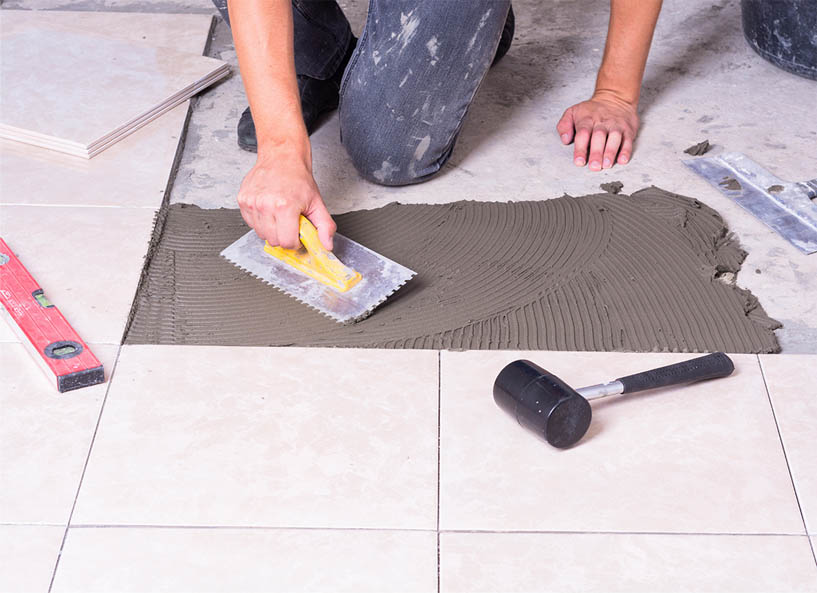From Idea to Conclusion: Superior Tile Installation Austin
From Idea to Conclusion: Superior Tile Installation Austin
Blog Article
Discover the Secrets to Perfect Floor Tile Installment Every Time
Attaining remarkable floor tile installment might appear like a difficult job, usually leading to disappointment and flaws that diminish the general aesthetic. Nonetheless, grasping the art of ceramic tile installation involves a series of specific steps and techniques that, when performed appropriately, can cause a smooth and refined surface. From surface preparation to cement application, each stage plays a crucial function in the final outcome of your project. By understanding the secrets behind each action, you can make sure that your floor tile installment not only fulfills however exceeds your expectations.
Correct Surface Preparation
Reliable ceramic tile installation pivots considerably on thorough surface prep work to make sure a remarkable result. Prior to laying tiles, it is important to evaluate the substratum's condition completely. The surface area has to be clean, dry, and structurally seem to prevent future problems such as loose ceramic tiles or split cement. Any kind of existing flooring product, adhesives, or sealants ought to be gotten rid of to develop an uniform base for the brand-new floor tiles.
To ensure appropriate bond, it is advised to roughen smooth surface areas via sanding or scarifying. In addition, applying a primer can enhance bonding between the substratum and the floor tile adhesive. Irregular surface areas need to be leveled making use of a self-leveling substance to stop lippage and guarantee a smooth finish.
In addition, checking for prospective sources of moisture is important, as excess wetness can result in mold growth and damage the tiles over time. Utilizing a moisture obstacle or waterproofing membrane layer in damp locations like restrooms or kitchens is important to protect the floor tiles from water damage. By meticulously preparing the surface prior to floor tile setup, one can create a long lasting and visually attractive tiled area that will certainly stand the test of time.

Selecting the Right Adhesive
Choosing the suitable adhesive is a vital step in making sure the effective setup of tiles. The kind of glue you choose will certainly depend upon various aspects such as the type of ceramic tile, the substratum material, and the area of the installation. There are different kinds of adhesives offered on the market, consisting of thin-set mortar, mastic, and epoxy.

Epoxy adhesives are very resilient and water-resistant, making them perfect for areas susceptible to moisture such as kitchens or bathrooms. They are additionally suitable for setting up glass or steel floor tiles. When picking an adhesive, make certain to follow the supplier's referrals and think about the specific demands of your floor tile setup project.
Accuracy Cutting Techniques
One of the most common devices utilized for precision cutting in ceramic tile setup is the floor tile cutter. Floor tile cutters come in numerous kinds, including hands-on tile cutters, electric damp saws, and handheld tile cutters. Hand-operated floor tile cutters are ideal for straight cuts on ceramic and porcelain floor tiles, providing precise and clean edges.
Additionally, utilizing devices like ceramic tile scribes or glass cutters can aid in racking up and snapping tiles with precision. By understanding these precision reducing methods, floor tile installers can make sure an expert finish and an aesthetically appealing result in their ceramic tile projects.

Cement Application Tips
When transitioning from accuracy reducing methods to grout application in ceramic tile installation, interest to detail and technique is paramount for achieving a remarkable finish. Grout offers not just as a practical aspect that fills the gaps between ceramic tiles however likewise plays a considerable duty in the overall aesthetic of the setup. To make certain a successful cement application, begin by selecting the ideal type and shade find out of grout that enhances the floor tiles. Mix the grout according to the producer's instructions, ensuring a lump-free and smooth uniformity.
When the cement is used, use a moist sponge to cleanse the tiles, making sure not to eliminate cement from the joints. Complying with these grout application tips will result in a professionally this mounted tile surface that boosts the beauty of any room.
Ending Up Touches and Upkeep
To complete the tile setup job efficiently, attention to information throughout the finishing touches and regular upkeep is critical. After the cement has dried out and the ceramic tiles are securely in location, the final steps involve ensuring that all sides are appropriately sealed.
Normal maintenance is crucial to preserving the elegance and performance of your tiled surfaces. A basic regimen of sweeping or vacuuming followed by wiping with a gentle cleanser can help maintain your ceramic tiles looking beautiful (tile installation austin). For locations that are often revealed to wetness, such as restrooms or kitchens, normal resealing of grout lines is recommended to protect against mold and mildew and mildew development
Conclusion
In final thought, attaining perfect ceramic tile setup each time needs interest to detail and correct techniques. By concentrating on surface area preparation, selecting the correct adhesive, utilizing accuracy cutting techniques, using cement very carefully, and completed with attention to detail, you can guarantee a professional-looking outcome. Remember to adhere to these actions and maintain your tiles consistently to prolong their life expectancy and maintain them looking their ideal.
One of the most common tools used for accuracy cutting in tile installation is the tile cutter. Tile cutters come in different types, including manual ceramic tile cutters, electric wet saws, and handheld floor tile cutters. Manual floor tile cutters are ideal for straight cuts on ceramic and porcelain floor tiles, giving accurate and tidy sides. Additionally, using tools like tile scribes or glass cutters can assist in racking up and breaking floor tiles with precision. By understanding these accuracy reducing methods, ceramic tile installers can make certain a professional coating and an aesthetically enticing result in their ceramic tile jobs.
Report this page